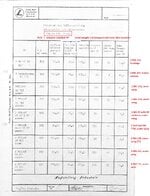- Thread starter
- #121
??Not really.
Is everything from this quote 'nor real' per your judgement:
It might be for the FFM, but might be possible for the FF. Former achieved 585 m/s when firing a 115g HE shell, while later achieved 600 ms when firing a 135 g HE shell - IOW, there was more oomph in the FF ammo vs. what FFM used. Ammo for the two was not interchangeable, even if outward looked the same.


